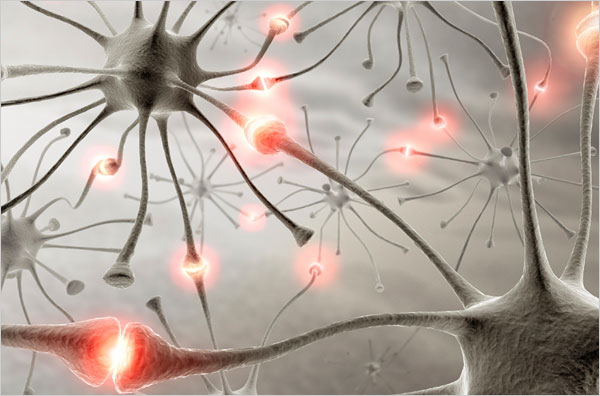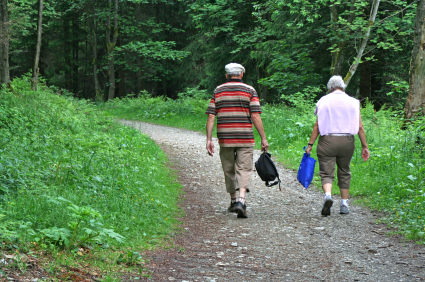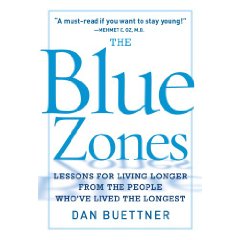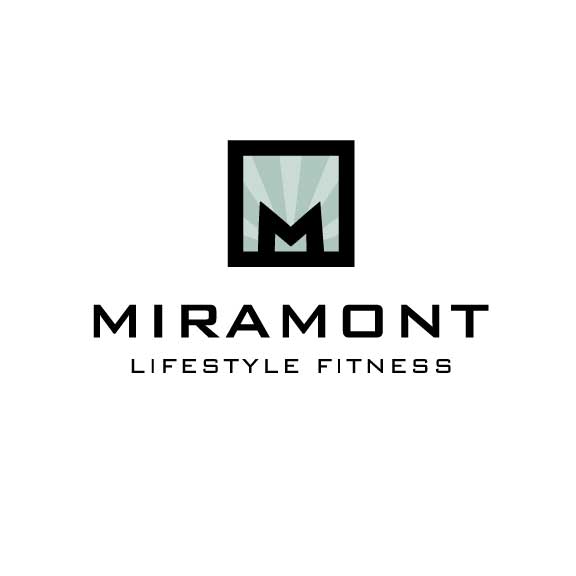|
Supporting Health and Wellness Professionals!
 As the year begins we explore what it means to be well and how we as wellness professionals can help our clients, friends, and family members stay healthy through out the life span. Human beings change as they age and yet all the new evidence is showing that when we stay healthy even though the human brain uploads less raw data and has short term memory loss we also know that being active - eating well - staying creatively engaged in life and connected to others keeps the brain neurons firing! The aging brain often manages the information it has better, sees the connections or relationship between things more clearly and has more comfort with abiguity and therefore less frustration. As the year begins we explore what it means to be well and how we as wellness professionals can help our clients, friends, and family members stay healthy through out the life span. Human beings change as they age and yet all the new evidence is showing that when we stay healthy even though the human brain uploads less raw data and has short term memory loss we also know that being active - eating well - staying creatively engaged in life and connected to others keeps the brain neurons firing! The aging brain often manages the information it has better, sees the connections or relationship between things more clearly and has more comfort with abiguity and therefore less frustration.
Self-directedness and Coaching by Michael Arloski, Ph.D., PCC Wellness coaching is built to include the life coaching principle that the agenda is set by the client. Yet we find our clients often arriving with expectations of receiving a ready-to-go program for “how to be well”. Coaching is not about delivering a “how to be well” prescription and signing a client up to follow a regiment of eating this, not that and exercising this way not that way. In teaching health and wellness coaches I always say that our client s know how to be “patients”, they know how to be “students”, but they don’t yet know how to be “clients”. A foundational step with any client is co-creating the alliance, and that means getting clear about the age-old que stion of “Who’s responsible for what?” Our clients want to know what we will provide for them in the way of guidance and resources, and what they will be responsible for. At the same time they are usually looking to us for answers. Ahhh…coach, don’t take the bait! Remember the old coaching maxim “The client has the answers, the coach has the questions.” Yet, we find our frustrated client, desperate for success in lifestyle change saying, “Just tell me what to do! Please!” Wellness coaching is built to include the life coaching principle that the agenda is set by the client. Yet we find our clients often arriving with expectations of receiving a ready-to-go program for “how to be well”. Coaching is not about delivering a “how to be well” prescription and signing a client up to follow a regiment of eating this, not that and exercising this way not that way. In teaching health and wellness coaches I always say that our client s know how to be “patients”, they know how to be “students”, but they don’t yet know how to be “clients”. A foundational step with any client is co-creating the alliance, and that means getting clear about the age-old que stion of “Who’s responsible for what?” Our clients want to know what we will provide for them in the way of guidance and resources, and what they will be responsible for. At the same time they are usually looking to us for answers. Ahhh…coach, don’t take the bait! Remember the old coaching maxim “The client has the answers, the coach has the questions.” Yet, we find our frustrated client, desperate for success in lifestyle change saying, “Just tell me what to do! Please!”
Self-directedness Varies - The reality is that we must recognize the individual differences in our clients and respect them. All of our clients fall somewhe re on a continuum from very high levels of self-directedness to very low levels of self-directedness and they are all OK! As a coach we are not here to judge our clients. The effective (and ethical) coach accepts the client exactly where they are at. If they are indeed a candidate for coaching, not referral, then we work with them and respect their need for direction, guidance and suggestion, all done with their permission. Self-directed clients love to chart their own course, take initiative and don’t always wait for direction. They go for it! They are great candidates for coaching systems that are supplemented by online features for communication and tracking. Less self-directed clients may be very motivated, but will look for a “go-ahead” from the coach before taking action. They appreciate more structure, in fact they thrive on it. Remember, the difference here is not good and bad, it’s just differences in style.
Read more
Move More + Sit Less = Greater Wellness by Michael Arloski, Ph.D., PCC
 Human beings were made to move. A big part of feeling and being really healthy is being able to move easily and joyfully. We love it when we are moving and being active, and when we have the energy to do so. When our movement is restricted we feel frustrated, bored, anxious and even depressed. Yet, the current way of life around the world is increasingly sedentary both at work, at home, and at play. Now a continual flow of research is indicting our lack of movement as one of our biggest, if not the biggest, health risk we face. Human beings were made to move. A big part of feeling and being really healthy is being able to move easily and joyfully. We love it when we are moving and being active, and when we have the energy to do so. When our movement is restricted we feel frustrated, bored, anxious and even depressed. Yet, the current way of life around the world is increasingly sedentary both at work, at home, and at play. Now a continual flow of research is indicting our lack of movement as one of our biggest, if not the biggest, health risk we face.
A new study from Australia, (http://www.healthday.com/Article.asp?AID=634816) released in advance of it’s publication in the journal Circulation, studied 8,800 men and women over six years. "This research provides another clear link between too much sitting and death from disease," said lead researcher David Dunstan, head of the Physical Activity Laboratory at the Baker IDI Heart and Diabetes Institute in Victoria. The study looked at TV watching time and actually concluded that every hour of daily TV watching increased the risk of dying from any cause by 11 percent. (The average Australian and American watches television four hours a day. The good news is research has shown that moving the muscles frequently throughout the day is one of the most effective ways of managing weight and protecting against disease, Dunstan added.
Read more
From Data to Wisdom
It took Barbara Hustedt Crook an awfully long time to get around to writing her first musical. She started last year, shortly before her 60th birthday. Her friend an d collaborator, Robert Strozier, waited even longer; he's 65. It's not that they didn't have the creative chops for the job. The two have spent their careers writing and editing in New York City, and Crook has a background in performing, singing and piano. But creating a musical always felt just out of reach--until now. d collaborator, Robert Strozier, waited even longer; he's 65. It's not that they didn't have the creative chops for the job. The two have spent their careers writing and editing in New York City, and Crook has a background in performing, singing and piano. But creating a musical always felt just out of reach--until now.
"Somehow I have a  confidence I didn't have before," says Crook. "I find that my brain makes leaps it didn't make so easily. I can hear my inner voice and trust instincts and hunches in ways I didn't used to." confidence I didn't have before," says Crook. "I find that my brain makes leaps it didn't make so easily. I can hear my inner voice and trust instincts and hunches in ways I didn't used to."
And, says Strozier, they're both a lot more willing to take chances than in the past. "At a certain age," he says, "you either get older or you get younger. If you get younger, you venture out and take risks."
Risk-taking seniors making daring mental leaps? That's not the stereotype. Indeed, until quite recently most researchers believed the human brain followed a fairly predictable developmental arc. It started out protean, gained shape and intellectual muscle as it matured, and reached its peak of power and nimbleness by age 40. After that, the brain began a slow decline, clouding up little by little until, by age 60 or 70, it had lost much of its ability to retain new information and was fumbling with what it had. But that was all right because late-life crankiness had by then made us largely resistant to new ideas anyway.
That, as it turns out, is hooey. More and more, neurologists and psychologists are coming to the conclusion that the brain at midlife--a period increasingly defined as the years from 35 to 65 and even beyond--is a much more elastic, much more supple thing than anyone ever realized.
Far from slowly powering down, the brain as it ages begins bringing new cognitive systems on line and cross-indexing existing ones in ways it never did before. You may not pack so much raw data into memory as you could when you were cramming for college finals, and your short-term memory may not be what it was, but you manage information and parse meanings that were entirely beyond you when you were younger. What's more, your temperament changes to suit those new skills, growing more comfortable with ambiguity and less susceptible to frustration or irritation. Although inflexibility, confusion and even later-life dementia are very real problems, for many people the aging process not only does not batter the brain, it actually makes it better.
"In midlife," says UCLA neurologist George Bartzokis, "you're beginning to maximize the ability to use the entirety of the information in your brain on an everyday, ongoing, second-to-second basis. Biologically, that's what wisdom is."
Read more
Icaria - Long Lived People and No Dimentia!
 Making it to 90 years old is awe-inspiring in much of the world. But on a tiny Greek island in the North Aegean Sea, nonagenarians barely merit a second glance.The island of Icaria could be the newest of the world's so-called blue zones — places where residents have unusually long life spans. Dan Buettner has crossed the globe many times over the years in search of blue zones, and he recently teamed up with AARP and National Geographic to study Icaria. Buettner and a team of demographers work with census data to identify blue zones around the world. They found Icaria had the highest percentage of 90-year-olds anywhere on the planet — nearly 1 out of 3 people make it to their 90s. Plus, Buettner says, "they have about 20 percent lower rates of cancer, 50 percent lower rates of heart disease and almost no dementia." Making it to 90 years old is awe-inspiring in much of the world. But on a tiny Greek island in the North Aegean Sea, nonagenarians barely merit a second glance.The island of Icaria could be the newest of the world's so-called blue zones — places where residents have unusually long life spans. Dan Buettner has crossed the globe many times over the years in search of blue zones, and he recently teamed up with AARP and National Geographic to study Icaria. Buettner and a team of demographers work with census data to identify blue zones around the world. They found Icaria had the highest percentage of 90-year-olds anywhere on the planet — nearly 1 out of 3 people make it to their 90s. Plus, Buettner says, "they have about 20 percent lower rates of cancer, 50 percent lower rates of heart disease and almost no dementia."
Read more
Good Cholesterol and Alzheimer's Disease
People with a gene variation that blocks a cholesterol-transport protein in the body have a lower risk of developing Alzheimer’s disease, a study found. Those that had this variation in both copies of the gene, which inhibits the cholesterol ester transfer protein, were about 70 percent less likely to develop Alzheimer’s disease during the study than those without the variation, research in tomorrow’s Journal of the American Medical Association showed. Those that had this variation in both copies of the gene, which inhibits the cholesterol ester transfer protein, were about 70 percent less likely to develop Alzheimer’s disease during the study than those without the variation, research in tomorrow’s Journal of the American Medical Association showed.
More than 30 million people worldwide have Alzheimer’s disease, according to the London-based advocacy group Alzheimer’s Disease International. There is no cure yet for the disease, which attacks the brain and causes memory loss. Medicines called CETP inhibitors that mimic the effect of the gene variation in today’s study are under development by Merck & Co. and Roche Holding AG for cholesterol and may prove to work in fighting Alzheimer’s, said study author Richard Lipton.
Today’s findings “may point the way to a new therapeutic avenue for preventing Alzheimer’s disease or promoting successful brain aging,” said Lipton, a professor and vice chairman of neurology at Yeshiva University’s Albert Einstein College of Medicine in Bronx, New York, in a Jan. 8 telephone interview. “These same drugs that have been developed to treat cholesterol may have promise as treatments for Alzheimer’s disease.”
‘Good’ Cholesterol - Those with the gene variation have higher levels of HDL, the high-density lipoprotein or “good” cholesterol in their body. Researchers are unsure what role the variation and higher levels of HDL play in lowering the risk of Alzheimer’s, Lipton said. Researchers looked at data from 523 people from the Einstein Aging Study, which has followed elderly Bronx residents for 25 years. All the participants were cognitively healthy at the start of the study and had their blood analyzed to see if they had a CETP gene variant. They were followed for an average of four years.
Read more
Continue Learning in 2010! Space is limited
Free Webinar "Beyond Resolutions: Co-creating a Well Life Vision for Motivation & Success" Wed. January 27th 12:30pm - 1pm est
Certification Training Schedule $200 incentive for enrolling in both Wellness Coach & Health Coach Certification trainings at the same time! Nurse CNE’s avaialble and ACSM CEC's applied for.
Wellness Mapping 360© “Wellness Coach” Certificate Training (20 hrs) Learn wellness concepts and professional coaching competencies that will give you the skills needed to individualize your wellness program or current work. Learn how to motivate others toward health and positive lasting lifestyle change.
- February 15/10 – 3/24/10 – 7pm – 9pm est (M/W) no class 3/1 & 3/3 - Webinar
- March 22/10 – 4/28/10 – 12pm – 2pm est (M/W) no class 3/29 & 3/31 - Webinar
- April 6/10 – 5/6/10 – 7pm – 9 pm est (T/TH) Webinar
$745.00 US- Registration fee includes course manual, digital tool package, and web-based support. You will need to purchase the book Wellness Coaching for Lasting Lifestyle Change.
Wellness Mapping 360© II- “Health Coach” Certification (Wellness Coach Certificate is a pre-requisite) (12 hrs) Participants learn to apply the WM360 model of wellness coaching to working with people with health challenges and in different settings including working the model with groups.
- February 23/10 – 3/18/10 – 12pm – 2pm est (T/TH) no class 3/2 & 3/4 Webinar
- April 5/10 – 4/21/10 – 7pm – 9pm est (M/W) Webinar
- May 3/10 – 5/19/10 – 12pm – 2pm est (M/W) Webinar
- May 11/10 – 5/27/10 – 7pm – 9pm est (T/TH) Webinar
$430 US - Registration fee includes course manual and web based supports. Participants need to purchase Paths of Wellness, Your Guide to a Healthier Life
Colorado Trainings On Location!
Wellness Mapping 360© “Wellness Coach” Certificate Training (20 hrs)
Miramont Lifestyle Fitness Center – On location in Fort Collins, Colorado! 
March 25th & 26th (Th/Fri) (Th/Fri)
$975.00 - Regis tration fee includes course manual, digital tool package, the book Wellness Coaching for Lasting Lifestyle Change, snacks/drinks daily, continued web/ personal support and daily access to Miramont Lifestyle Fitness Center. Assistance with travel arrangements available with request.
Wellness Mapping 360© “Wellness & Health Coach” Certification Training Intensive Plan for Summer !
June 24th, 25th, 26th, 27th (32 hours)
$1295.00 - Registration fee includes course manuals, digital tool package, the book Wellness Coaching for Lasting Lifestyle Change, the journal Paths of Wellness, Your Guide to a Healthier Life snacks/drinks daily, continued web/ personal support and daily access to Miramont Lifestyle Fitness Center. Assistance with travel arrangements available with request.
|
 |